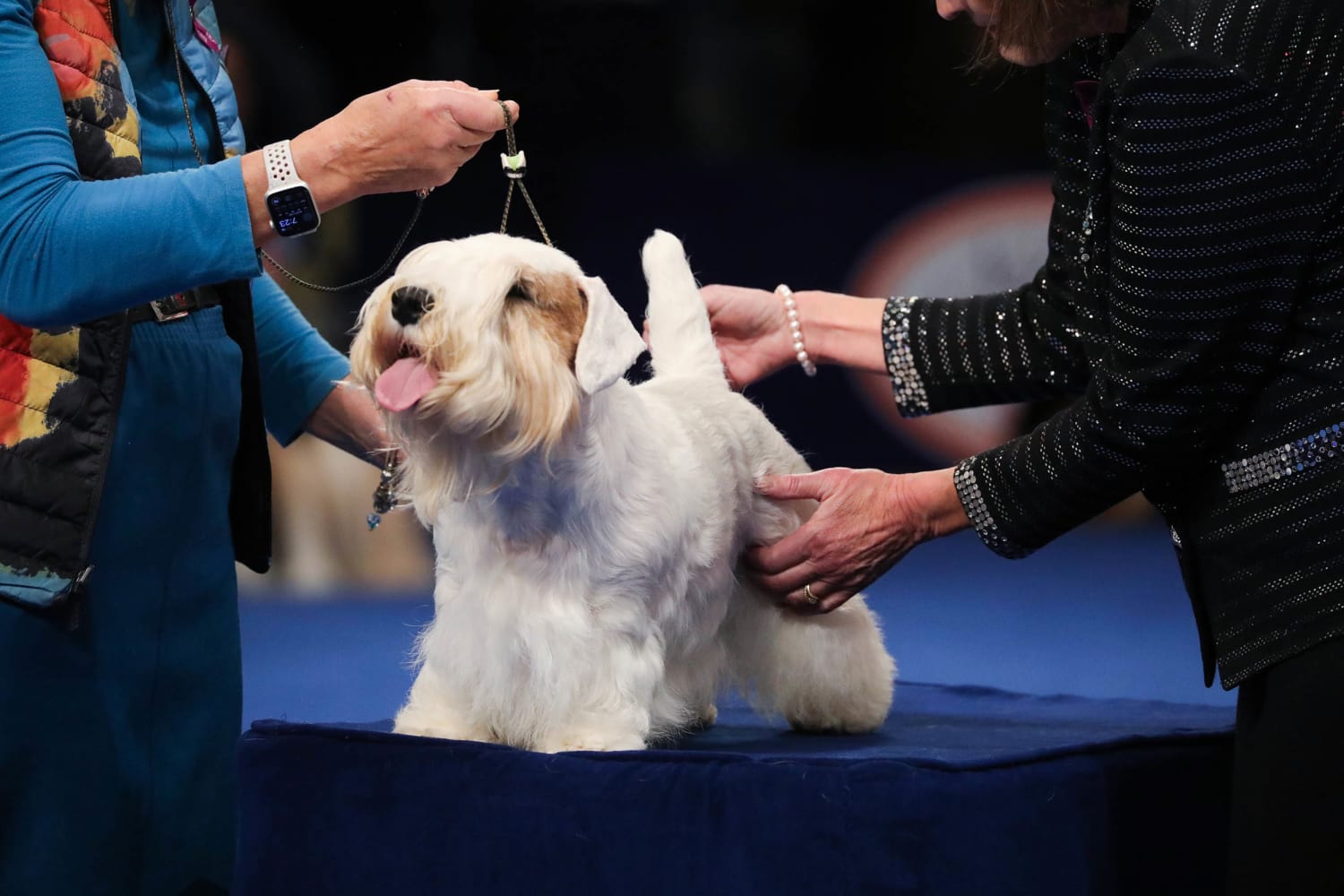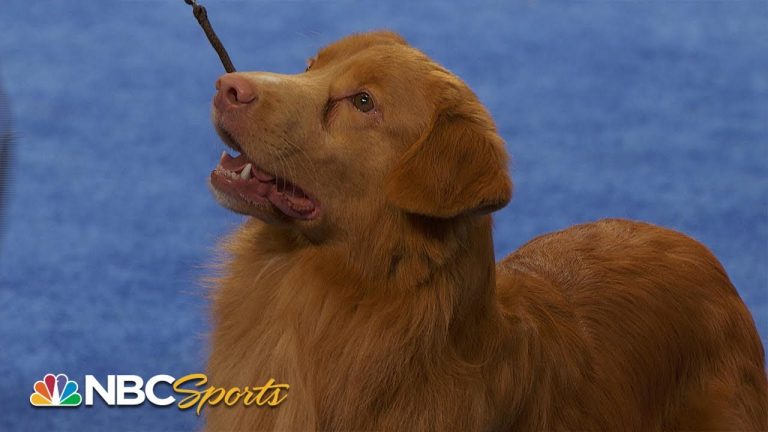Welcome, dog breed enthusiasts, to our guide on the National Dog Show Order of Groups! If you are passionate about different dog breeds and enjoy watching them compete, then understanding the order of groups at the National Dog Show is essential. This annual event highlights the finest pedigree dogs across various categories, showcasing their beauty, agility, and personality. By delving into the sequence in which different dog breeds are presented, you can enhance your viewing experience and gain insight into the unique characteristics of each group. Join us as we unveil the fascinating world of the National Dog Show order of groups, providing you with valuable information and insights to appreciate these magnificent creatures to the fullest.
There are seven different groups judged during the National Dog Show—each with specific characteristics and skills. Which group are you the most excited to see? Buy tickets to the live event on Nov. 16-17: https://t.co/UiEYOd9cYU#NationalDogShow #dogbreeds #dogshow pic.twitter.com/R8GnBPcuYw
— National Dog Show (@TheNatlDogShow) November 7, 2019
Introduction to the National Dog Show
The National Dog Show is an annual event that showcases over 190 breeds and varieties of dogs. Organized by the Kennel Club of Philadelphia, this prestigious event is held in Philadelphia, Pennsylvania. Dog enthusiasts from around the country eagerly await this event to see the top dogs compete.
History of the National Dog Show
The National Dog Show has a long history, dating back to its first edition in 1879. It is one of the oldest dog shows in the United States and has continued to grow in popularity over the years. The show gained widespread attention after becoming a Thanksgiving Day tradition, following its feature on national television.
Competition Format
The competition is divided into various groups, each representing specific breeds. Dogs compete within their respective groups, with the winners advancing to the Best in Show category. The meticulous judging process evaluates each dog based on breed standards, temperament, and overall appearance.

Understanding the Order of Groups
When it comes to the National Dog Show, understanding the order of groups is crucial for dog breed enthusiasts. The show typically follows a specific sequence in which different groups of dog breeds are showcased based on certain characteristics and traits.
The Terrier Group
The Terrier Group is known for its feisty and energetic breeds that were originally bred for hunting and vermin control. In the National Dog Show order of groups, Terriers usually kick off the competition, capturing the audience with their spirited demeanor and distinctive coats.
The Sporting Group
The Sporting Group consists of breeds that excel in activities like hunting and retrieving. With their athleticism and friendly nature, Sporting dogs often charm both judges and spectators. This group typically follows the Terrier Group in the show order.
The Working Group
The Working Group showcases breeds that excel in various tasks like guarding, pulling sleds, or performing water rescues. These intelligent and versatile dogs impress with their strength and skills. The Working Group usually comes after the Sporting Group.
Group 1: Sporting Dogs
At the National Dog Show, Group 1 comprises the Sporting Dogs. These dogs are known for their athleticism, intelligence, and strong hunting instincts.
American Kennel Club Recognition
The American Kennel Club (AKC) officially recognizes several breeds within the Sporting Group. This includes popular breeds such as Golden Retrievers, Labrador Retrievers, and English Springer Spaniels.
History of Sporting Dogs
Sporting dogs have a rich history dating back to their origins as hunting companions. These breeds were developed to assist hunters in various tasks such as retrieving game or flushing out birds from hiding spots.
- Distinctive Features: Sporting dogs are known for their keen sense of smell, endurance, and willingness to work closely with humans.
- Training: Due to their intelligence, Sporting dogs excel in various canine sports and are quick learners during training sessions.
Group 2: Hound Dogs
Hound dogs are known for their keen sense of smell and hunting abilities. They are a diverse group of breeds that excel at tracking scents and flushing out game.
Popular Hound Dog Breeds
Some popular hound dog breeds include the Beagle, known for its friendly and curious nature, and the Basset Hound with its droopy ears and excellent scent tracking abilities.
Hound Dog Training
Training hound dogs can be challenging due to their independent nature. However, with patience and consistency, hounds can excel in obedience and scent-related tasks.
- Provide regular exercise to keep them mentally and physically stimulated.
- Use positive reinforcement techniques to encourage good behavior.
- Engage them in activities that tap into their natural instincts, such as nose work or tracking exercises.
Group 3: Working Dogs
Group 3 at the National Dog Show consists of the Working Dogs category. These breeds are known for their intelligence, strength, and ability to perform various tasks.
Popular Working Dog Breeds
Working dog breeds such as the Labrador Retriever, German Shepherd, and Boxer are some of the most well-known and beloved breeds in this group.
Characteristics of Working Dogs
Working dogs are bred to assist humans in various tasks such as guarding, rescue operations, pulling sleds, and assisting the disabled. These dogs are highly intelligent and trainable.
- Strength and Agility
- Protective Instincts
- Work Ethic
Group 4: Terrier Dogs
Terrier dogs belong to Group 4 at the National Dog Show. Known for their fearlessness and feisty nature, terriers are a diverse group of breeds that vary in size, coat type, and temperament.
Popular Terrier Breeds
Some of the popular terrier breeds include:
- Scottish Terrier
- West Highland White Terrier
- Jack Russell Terrier
Terrier Group Characteristics
Terriers are known for their energetic and inquisitive nature. They were originally bred for hunting and have strong instincts. Terriers require regular exercise and mental stimulation to keep them happy.

Group 5: Toy Dogs
Toy dogs are a beloved group of small canine companions that excel as indoor pets for various households. These pint-sized pups are known for their playful nature, adorable appearances, and charming personalities.
Popular Toy Dog Breeds
Within the Toy Dog Group, there are several popular breeds that capture the hearts of dog lovers. Some of the well-known toy breeds include Chihuahuas, Yorkshire Terriers, and Shih Tzus. These breeds often participate in the National Dog Show’s Toy Dog category.
Characteristics of Toy Dogs
Toy dogs typically exhibit characteristics such as cute and small size, affectionate demeanor, and loyalty to their owners. Despite their small stature, they are often confident and make excellent companions for individuals or families living in apartments or smaller homes.
- Playful: Toy dogs are known for their playful antics and love for interactive toys.
- Low Maintenance: Due to their small size, toy dogs require minimal grooming and exercise compared to larger breeds.
- Social: Many toy breeds enjoy being around people and other pets, making them ideal for those seeking companionship.
Group 6: Non-Sporting Dogs
Group 6 at the National Dog Show showcases a variety of breeds categorized as Non-Sporting Dogs. These dogs were originally bred for different purposes other than herding or hunting, leading to a diverse group with unique characteristics.
Popular Breeds in Group 6
Some popular breeds in the Non-Sporting group include the Poodle, known for its intelligence and hypoallergenic coat, the adorable Bulldog with a distinctive wrinkled face, and the regal Dalmatian known for its spotted coat.
Characteristics of Non-Sporting Dogs
Non-Sporting Dogs exhibit a wide range of sizes, coat types, and temperaments. From the small and lively Pomeranian to the large and majestic Standard Poodle, each breed in this group brings something unique to the table.
- Adaptability: Non-Sporting Dogs are known for their adaptability to various living environments, making them suitable for both apartments and spacious homes.
- Temperament: While each breed has its own distinct personality, Non-Sporting Dogs are generally known for being intelligent, independent, and affectionate.
- Grooming Needs: The grooming requirements of Non-Sporting breeds vary greatly, from the low maintenance Bichon Frise to the high-maintenance Shih Tzu that requires daily grooming.
Group 7: Herding Dogs
Herding dogs, also known as sheepdogs, are a group of highly intelligent and energetic dogs that were bred to help herd livestock. They are known for their strong work ethic and incredible agility, making them excellent partners for farmers and ranchers.
Popular Breeds in Group 7
Some popular breeds in Group 7 of herding dogs include:
- Australian Shepherd
- Border Collie
- German Shepherd
Skills and Characteristics
Herding dogs are known for their keen intellect, exceptional agility, and strong herding instincts. They excel in obedience training and are highly trainable. These dogs have a natural herding ability and are always eager to learn new tasks.
And Tips for Dog Breed Enthusiasts
If you are a dog breed enthusiast, staying updated on the national dog show order of groups is essential to understand the latest trends and standards in the canine world.
Research Different Breeds
Start your journey by researching different dog breeds featured in the National Dog Show to broaden your knowledge and appreciation.
Explore the unique characteristics and traits of each breed to better understand their place in the competition.
Attend Dog Shows
Attending dog shows in person can provide valuable insights into the world of dog breeds and competition.
- Observe different breeds in action
- Interact with breeders and handlers
- Learn more about grooming and training techniques
Frequently Asked Questions
- What is the National Dog Show?
- The National Dog Show is an annual dog show in the United States that features various breeds competing in conformation shows to be judged based on the official breed standard.
- What are the Order of Groups in the National Dog Show?
- The Order of Groups in the National Dog Show categorizes dog breeds into different groups based on their characteristics and purposes, such as Sporting Group, Hound Group, Working Group, Terrier Group, Toy Group, Non-Sporting Group, and Herding Group.
- How are dogs judged in the National Dog Show?
- Dogs in the National Dog Show are judged based on how closely they conform to the official breed standard of their respective breed, which includes factors like appearance, movement, coat, and temperament.
- Can anyone attend the National Dog Show?
- Yes, the National Dog Show is open to the public, so anyone interested in dog breeds and dog shows can attend and watch the competition.
- Is the National Dog Show only for purebred dogs?
- Yes, the National Dog Show is specifically for purebred dogs that are registered with the American Kennel Club (AKC) or the Kennel Club of the UK, as mixed-breed dogs are not eligible to compete.
Final Thoughts: Embrace the Diversity of the National Dog Show Order of Groups
In conclusion, the National Dog Show’s order of groups offers a fascinating glimpse into the world of dog breeds. Each group represents a unique set of characteristics and skills, showcasing the diversity and beauty of man’s best friend. Whether you are a seasoned dog show enthusiast or a newcomer to the scene, understanding the order of groups can enhance your appreciation for these incredible animals.
By learning about the different groups and the breeds within them, you can deepen your knowledge and connect with fellow dog lovers on a whole new level. So, next time you watch the National Dog Show, pay attention to the order of groups and marvel at the incredible display of canine talent and diversity!



